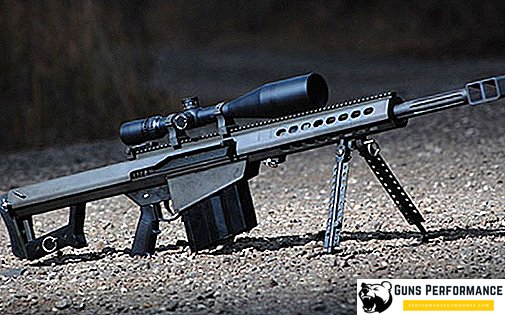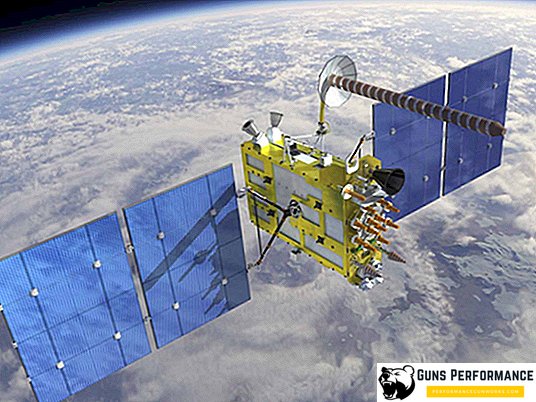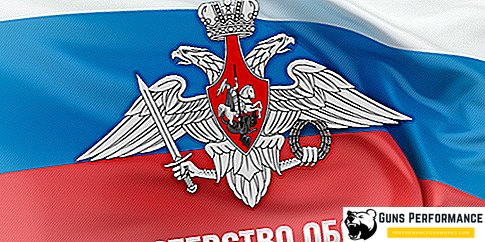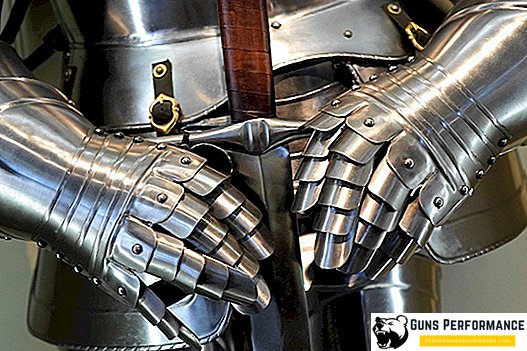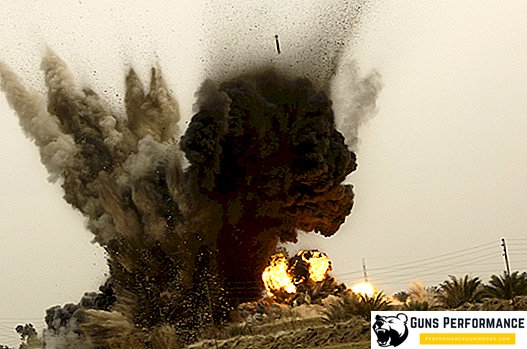I am the "Yak" fighter, my motor rings,
Heaven is my abode,
And the one that sits in me,
Believes he is a fighter.
Vladimir Vysotsky
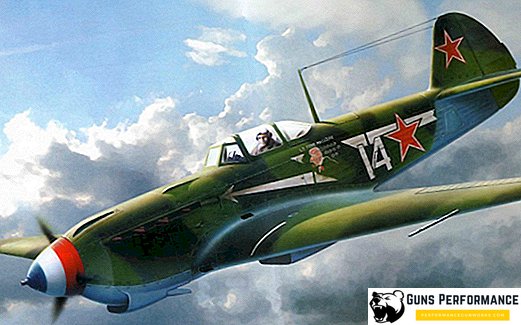
The first two years of the war were difficult times for the Red Army and the entire Soviet state. The combat equipment developed in the pre-war period — tanks, artillery systems, aircraft — also underwent a serious examination. Only by 1942, the Soviet industry was able to go on a war footing and significantly increase output. Evacuated factories began to work, supplies of strategic materials and equipment under lend-lease were established.
In the first months of the war, only one task was set before the heads of defense plants: to maximize the number of products produced, any changes in the design of weapons and military equipment were rejected if they reduced their output. Despite such a setup, it was already impossible to ignore the experience gained at the front and during mass production.
Yak-9 was the fourth in a row (after the Yak-1, Yak-3 and Yak-7) fighter of the Second World War period, developed by the designers of the Yakovlev Design Bureau. During its creation, the entire experience of the use of fighter aircraft at the initial stage of the war was taken into account. In fact, the Yak-9 was a continuation of the Yak-7 fighter (it was very similar to it externally), but the design of this machine was much more perfect.
The Yak-9 is the most massive Soviet fighter of the war period. Its production began in October 1942 and lasted until 1948. During this period, 16 769 aircraft were launched. This machine was in operation until 1950. In addition to the Soviet Air Force, the Yak-9 used the air forces of Bulgaria, Poland, Albania, Hungary, Yugoslavia, China and the DPRK. There is information about the supply of these fighters in the US and the UK.
In 1944, the Yak-9 aircraft of various modifications on the front were more than any other fighter aircraft combined. The production of the machine was arranged at four aircraft factories: No. 153 (Novosibirsk), No. 166 (Omsk) and No. 82 (Moscow). At its peak, the production of fighters at plant number 153 reached twenty aircraft a day.

During the period of mass production, more than twenty modifications of the fighter were manufactured, fifteen of which went into series. The Yak-9 was good for its versatility: various modifications of this machine could perform various tasks, including the fighter-bomber, the front-line fighter, the high-altitude interceptor, the long-range fighter. The Yak-9 fighter installed five different types of engine, the aircraft had six modifications with different volumes of fuel tanks and seven weapon options.
Yak-9 took part in all the major battles of the war, starting with the Battle of Stalingrad. It is almost impossible to overestimate the contribution of this car to the victory over Hitler Germany. The ease of operation, high firepower and good flight characteristics of this fighter in many ways contributed to the conquest of air supremacy by the Soviet Air Force. On the Yak-9 were eliminated most of the structural and technological defects that were characteristic of its predecessors. Yak-9 also participated in the war on the Korean Peninsula.

However, before proceeding to the review of the Yak-9, it is necessary to say a few words about the history of its creation, as well as the modifications that this illustrious machine had.
History of creation
The experience of the initial period of the war clearly showed that the main problem of the Yak fighter jets is the lack of power available compared to the German fighter (the ratio of the power of the power plant to the mass of the aircraft). It is for this reason that they lost to their opponents Bf-109F and Bf-109G in vertical maneuver and climb.
This problem could be solved in two ways: reduce the mass of the aircraft or install a more powerful engine on it. Increased speed characteristics of the aircraft and improved aerodynamic qualities of the machine. On the first path we went when creating the Yak-3 fighter, it was made as easy as possible by reducing the volume of fuel tanks and the shortened wing. However, this modernization dramatically reduced the practical range of the aircraft and the time it was in the air.
Another effective and simple way to facilitate the fighter was the maximum replacement in its design of all wooden elements to metal (duralumin). However, at the beginning of the war, the USSR experienced a severe shortage of "winged metal". The situation began to change for the better only towards the end of 1942. Which allowed the designers of the Yakovlev Design Bureau to start creating a new, more high-speed fighter.
It was based on the Yak-7B production aircraft, on which the M-105PF engine was installed. The designers carefully analyzed the elements of the fighter for possible weight reduction and improvement of the aerodynamic qualities of the machine. Wooden wing spars were replaced with duralumin. Only this change allowed to reduce the total weight of the structure by 150 kg. To further ease the car, one UBS machine gun was removed from it, and to improve visibility from the cab, the gargrot was lowered and a new lantern was installed.

June 26, 1942 prototype aircraft, designated Yak-7DI, first rose to the sky. The test results were encouraged by the designers: the new fighter surpassed the Yak-7B in flight range, showed better maneuverability and rate of climb. State tests were completed on August 5, the fighter was adopted under the name of the Yak-9.
Serial production of the Yak-9 began in October 1942, first production was established at the Novosibirsk plant number 153 (it went along with the Yak-7B), and later the Omsk plant number 166 began production of the Yak-9.
The first Yak-9 fighters appeared on the front already in late 1942, during the Battle of Stalingrad, but their number was insignificant. It was only in the spring of 1943 that the massive machines began to enter the combat units. The first battle in which the Yak-9 was used more or less en masse was the Battle of Kursk.
The first operating experience of the fighter revealed some shortcomings, most of which were associated with poor quality manufacturing machines. In particular, there were frequent cases of detachment of the wooden skin of the wing from the power frame. Brigades of repairmen were sent to the front, which, together with the technical staff of the combat units, eliminated problems.

By the beginning of the Kursk battle, the Yak-9 was in service with five fighter air divisions, and by the end of July 1943, the 11th mixed air corps, which included three regiments armed with the Yak-9, added to them. The aircraft had good aerobatic qualities and excellent maneuverability, was easy to operate. However, in terms of speed, he lost to the best German fighters Bf 109G and Fw 190A. The reason was simple - the German cars were more powerful engines. Another drawback of the Yak-9 was its insufficient armament, which many famous pilots mentioned in their memoirs.
Already in the summer of 1943, two new versions of the car were created - the Yak-9D and Yak-9T. About the last of them you need to say a few words separately. The letter "T" in the designation of the machine means "heavy" and this definition does not refer to the weight of the fighter, but to its armament - the 37-mm aircraft gun NS-37. To install it on the plane, I had to change its design, but it was worth it. Previously, in order to shoot down a sturdy German twin-engine bomber, the pilot sometimes had to expend all the ammunition; a 37-mm gun could have completed this task in a dozen shots. Later, the Yak-9T was very effectively used against enemy armored vehicles and ships on the Black Sea.
True, there were to the new instrument and comments. Its rate of fire was unsatisfactory for an aircraft gun, and a significant return reduced the accuracy of fire. Yak-9T perfectly suited pilots who can shoot well, but there were not so many of them.

At the time of the war, the Yak-9 was the main fighter of the Soviet Air Force. After graduation, the USSR supplied these aircraft to its allies in Eastern Europe and Asia.
Modifications

One of the main advantages of the Yak-9 was the high versatility of this aircraft. It is easily modified in combat vehicles, designed to perform a variety of tasks. In total there were fifteen serial modifications of the fighter, some of them are described below:
- Yak-9D. Modification with increased fuel capacity (480 kg, instead of 320 for the Yak-9). The plane had four fuel tanks - two root and two, located in the wing consoles, the flight range was increased to 1,400 km. Mass production of the machine began in the spring of 1943 and lasted until mid-1944. During this time, 3068 fighters of this modification were manufactured. Reviews of this modification are rather contradictory: operation has shown that additional fuel is often simply not necessary, therefore, some of the tanks were closed with plugs.
- Yak-9T. A variant of the fighter, armed with the 37-mm gun NS-37, which was installed in the collapse of the cylinders. Because of its considerable length, the cockpit was shifted back 400 mm, and the design of the aircraft was strengthened. Ammunition guns was 30-32 shells. In addition to the NS-37, one UB synchronous machine gun was installed on the Yak-9T. This modification fighter quite successfully used to destroy ground targets. An armor-piercing 37-mm projectile pierced armor 30 mm thick from 500 meters. Production of the aircraft was launched in March 1943 and lasted until mid-1945, in total more than 2,700 aircraft were produced.
- Yak-9TD. This is another modification with an increased fuel supply, mass production was started in 1944.
- Yak-9K. Another "armor-piercing" modification of the "nine", created on the basis of the Yak-9T. This fighter was equipped with a 45-mm gun NS-45. To reduce the impact of the gun, a muzzle brake was installed on it. Despite this, during the shooting the fighter slightly unfolded and threw up; it was recommended to shoot only in short bursts. In one second, the Yak-9K threw 5.53 kg of metal. The modification was produced in April-June 1944, in total 53 aircraft were built. In a large series of fighter did not go because of the unreliable operation of the gun.
- Yak-9TK. A modification with a reinforced design and weapon mounting system that allowed the installation of a ShVAK, NS-37, VYa-23 or NS-45 cannon on it, depending on the specific tasks of the fighter. The modification was developed in the second half of 1943.
- Yak-9M. This model of fighter can be called a further development of the Yak-9D. The plane had a fuselage with the cockpit shifted back 400 mm (as on the Yak-9T). In 1944, a more powerful VK-105PF-2 motor was installed on the car, which somewhat improved its LTH. Yak-9M - one of the most massive modifications of the fighter, a total of 4239 aircraft were produced.
- Yak-9DD. Fighter, specially designed to accompany long-range bombers of the Tu-2. The Yak-9DD was used in joint operations with the Allied aviation of the anti-Hitler coalition. The fighter had eight fuel tanks located in the wings, with a total fuel capacity of 630 kg. The machine was installed more sophisticated instrumentation and navigation equipment, allowing to fly over long distances in different weather conditions. The flight range of the Yak-9DD was 1,800 km, and it weighed 3390 kg. Armament remains the same: 12.7-mm machine gun and 20-mm cannon.
- Yak-9R. The basic model of the fighter, converted into a nearby intelligence officer. Photo equipment was installed in the free compartment. It was mass-produced at aircraft factories, in small batches, and serial Yak-9s were reconstructed as reconnaissance aircraft in aircraft repair shops. There was another reconnaissance aircraft, created on the basis of the Yak-9D fighter, which can be called a long-range reconnaissance aircraft.
- Yak-9b. Modification of the Yak-9D, which can be called a fighter-bomber. The bomb bay was equipped behind the cockpit, it contained four hundred kilogram bombs or four anti-tank cumulative bombs. A total of 109 aircraft of this modification were produced.
- Yak-9PD. High-altitude interceptor aircraft, designed specifically for the defense of Moscow. Work on this fighter began in 1942, after the German reconnaissance aircraft Ju-86r-1 began to appear over the capital. For a very long time it was not possible to debug the power plant of the fighter, its normal operation could be achieved only by the spring of 1944. But at this time, the Germans were no longer up to reconnaissance flights over Moscow. A total of 35 cars were made of this modification.
- Yak-9U. Modification of the aircraft, which appeared in late 1943. In fact, there were two versions of the Yak-9U fighter - with the M-107A and M-105PF-2 engine. In addition to installing the new engine, other changes were made to the design of the fighter. The oil radiator has moved from under the bonnet to the central part of the wing, the rear part of the fuselage has been sheathed with plywood instead of linen, and has improved the sealing of the car. The armament of both fighters included a gun in the collapse of the engine (20 or 23 mm) and two machine guns of 12.7 mm caliber. Its production began in April 1944. Later, the cooling system was upgraded.
- Yak-9UT. The fighter, created on the basis of the modification of the Yak-9U, it was distinguished by more powerful weapons. This combat vehicle was armed with three guns: the central NS-37 (37 mm) and two synchronous B-20s (20 mm). In a second, a fighter could release 6 kg of deadly metal into the enemy. Issue Yak-9UT began in February 1945, a total of 282 aircraft were manufactured. They managed to get to the front literally in the last days of the war.
- Yak-9 "Courier". A modification of the aircraft, designed to carry one passenger (usually courier). A place for him was equipped in the rear cabin.
Description of construction
The Yak-9 is a single-engine single-piston monoplane with a low-lying cantilever wing and a three-bearing chassis retractable in flight. The aircraft had a mixed construction made of wood, duralumin, plywood and canvas.

The fuselage of the fighter had a frame made of chromansile pipes, to the front of which the engine frame was attached. The hull of the nose of the fuselage was made of metal, the tail of the machine was sheathed with plywood. In the central part of the fuselage was the cockpit, which had a fairly rich set of equipment. The front and rear of the pilot defended the armored glass, and there was also an armor plate mounted behind the seat back. The central part of the lamp was discharged.

The wing of the Yak-9 had a modified Clark-YH profile, its design consisted of two duralumin spars, a set of wooden ribs and stringers, as well as a working plywood skin of fairly considerable thickness. From above the covering was pasted over with a cloth on epoxy glue. The wing mechanization consisted of brake flaps and ailerons. Their frame was also made of dural. Aileron control was carried out with the help of plastics, and the shields were produced by a pneumatic system. In the wing of the aircraft there were two (four or even eight of them on other versions) fuel tanks, which from the inside had a special coating covering the holes.

The Yak-9 had a mixed design of feathering, with metal spars, ribs, but the covering partly consisted of plywood and linen. Steering was done by means of the rigging.
The fighter had a tricycle landing gear, the main pillars of which were removed using a pneumatic system. If it broke, the release and cleaning of the chassis could be done manually.
On the Yak-9 was installed water-cooled engine M-105PF with twelve cylinders and a rated capacity of 1260 liters. with. The fighter was equipped with a metal three-bladed propeller VISh-61P with variable pitch.

Armament Yak-9 consisted of a central cannon, placed in the collapse of the engine and a synchronous machine gun, firing through the plane of the screw. Initially, the ShVAK gun (20 mm) and the UBS machine gun (12.7 mm) were installed on the Yak-9. On subsequent modifications of the machine weapons repeatedly increased.
In 1943, the collimator sights on the Yak-9 were replaced by a primitive ring BB-1. They were a frame with a cross made of wire and a fly mounted on the hood of a fighter. The pilots perceived such a "primitivization" as a whole positively, because domestic collimator sights were of very poor quality.

Evaluation of the project and combat use
In Soviet historiography, the position was actively promoted that the last pre-war generation of domestic fighters (MiG-3, Yak-1 and LaGG-3) exceeded the German Me-109 in its main characteristics. But, they say, they were very few. At the same time, the LTH of Soviet aircraft was compared with a modification of the Bf 109E, which at the time of the outbreak of the war was already considered obsolete by the Germans and was practically not used on the Eastern Front. Modifications of the Bf 109F-1 and Bf 109F-2 surpassed the above Soviet machines in all respects.

During the first years of the war, Yakovlev was constantly engaged in improving his aircraft, but the German designers did not waste time. In the summer of 1942, a new fighter, the Me-109G-2, appeared, making the gap between the characteristics of Soviet and German aircraft even larger.
Существует отчет НИИ ВВС о боевом использовании истребителей "Як", датированный концом 1942 года. В нем приведены оценки этих самолетов, выказанные непосредственно самими летчиками. По их мнению, "… для успешного исхода воздушного боя под Сталинградом на каждый немецкий истребитель необходимо было иметь два истребителя "Як".
Схожая ситуация наблюдалась и на протяжении всего 1943 года. Позиции советских ВВС постепенно улучшались, но основной причиной этому стало значительное увеличение их численности. В начале 1942 года они превосходили ВВС Германии в 1,8 раза, а к лету 1943 года эта цифра выросла еще в два раза (до 3,6).

В 1943 году союзная авиация начала планомерно уничтожать немецкие города, что, с одной стороны, серьезно усложнило работу промышленности Германии, а с другой заставило направить часть истребительной авиации на защиту собственной территории.
Як-9 не уступал немецким истребителям на малых и средних скоростях, но был несколько хуже своих оппонентов в вертикальном маневре и в наборе высоты. Появление у немцев тяжеловооруженного Bf 109G поставило вопрос об отставании истребителей "Як" по мощи вооружения. Только появление "тяжелого" Як-9Т смогло вернуть равновесие, но этот самолет требовал высокой квалификации летчика.
Як-9, несомненно, можно назвать лучшим истребителем семейства "Як". Он имел лучшую скорость и скороподъемность, чем Як-1 и Як-7, также "девятка" имела лучшую вертикальную маневренность. В целом характеристики этого самолета позволяли успешно противостоять немецким истребителям.

В конце войны качество советских истребителей отошло на второй план - численное превосходство ВВС СССР над Люфтваффе стало совсем неприличным (в 9,6 раза).
Specifications
Ниже даны основные ЛТХ Як-9:
- размах крыла, м - 9,74;
- длина, м - 8,55 м
- высота, м - 3;
- масса, кг - 3080;
- двигатель - ВК 105ПФ-3
- мощность, л. with. - 1360;
- макс. скорость, км/ч - 602;
- практическая дальность, км - 1410;
- макс. скороподъемность, м/мин. - 1020;
- практический потолок, м - 10600;
- экипаж - 1 чел.




